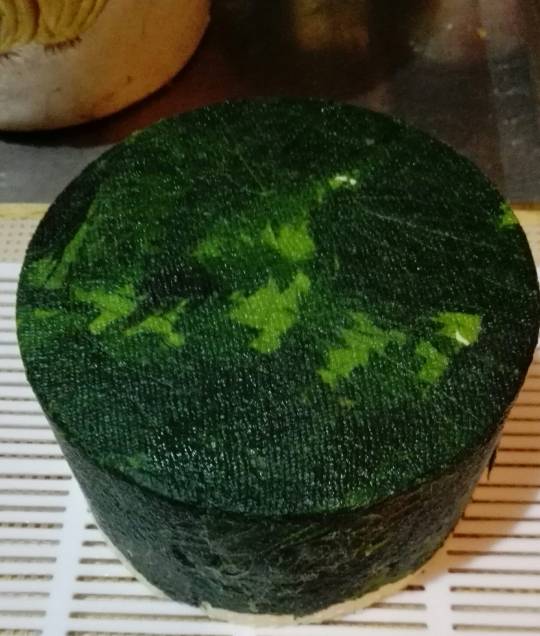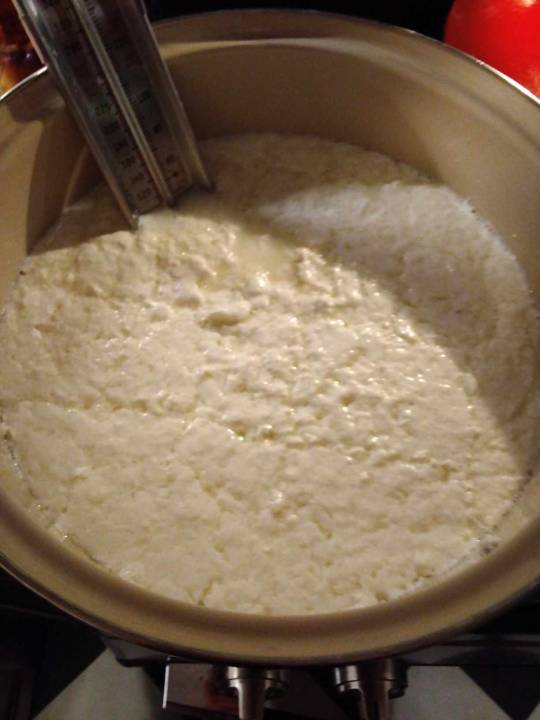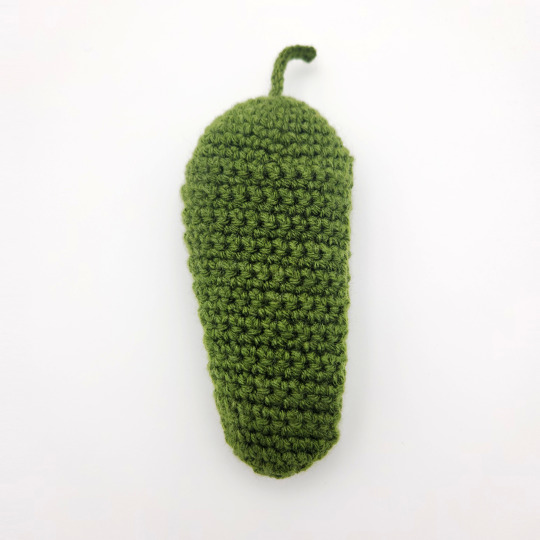#cheese making
Text






Fresh mozzarella sticks (x)
#food#mozzarella#homemade mozzarella#cheese making#cheese pull#cheese sticks#mozzarella sticks#food porn#gifset#food gif#gif#mine#recipe#recipes
1K notes
·
View notes
Note
So, I’m seriously looking into getting into tall ship sailing (waiting on follow-up from an interview rn) and I’m wondering for getting into it more long-term -
what do people do after sailing tall ships? Like, it’s a pretty physical job, and I’d assume there’s a point where your joints just can’t keep up with it.
Are there other jobs in the industry that people move to? I’m not really keen on the idea of moving up in the ship’s hierarchy- admin and being someone’s boss both aren’t really my thing. Do people retrain in completely different careers? Go back to whatever they were doing before they started sailing?
Anyway, I know your sample size might not be super large so I’d appreciate anything. Thanks a bunch!
This is hard to answer directly - on the one hand sailing tall ships is such a niche industry that there are limited pathways for straightforward advancement. But on the other hand, it overlaps with such a large number of other industries, and requires such a jack of all trades skillset - tourism, carpentry, history and preservation, hospitality, marine electronics, etc. etc. etc. - that there's a lot of ways forward for what I guess I'd call lateral advancement: moving to another job which uses most of the same skills. So there's no one answer, but if it helps, here's some things my tall ship deckhand friends have ended up doing, after no longer deckhanding tallships:
Get a captain's license and keep sailing. Captains often have it a bit easier physically (balanced out by the mental stress lol), and are paid better. Owning your own boat is optional; plenty of companies hire captains by the season to sail the boat, while the management of the company is dealt with by the actual owners. (This is what I did! I don't have the sail-hauling arms I did as a deckhand, but my knees and bank account are both in better shape).
Bosun, first mate, engineer, some other specialized non-captain crew member, usually involves licensing or other education that's useful down the road if you switch to an adjacent career
Racing yachts
Captain for hire on private vessels
Outward bound guide, other wilderness education programs
Harbor cruises, lobster tour guides, and other motor-powered tourist boats, both as captain and as crew - you have the patter and the safety skills but you don't want to deal with the hassle of sails
Water taxis, ferries and other passenger vessels
Lobstering, fishing, aquaculture, tugboats, other non-tourist waterfront industries
Marine surveyor, marine electrician, other specialized technician
Working in a shipyard - good fit for all the fit-out skills of sanding, painting, varnishing, covering and uncovering the boat
Cruise ship hostess
Train conductor (the passion for the early 1900s carried over well)
Working at a a museum focused on local maritime history
Tour guide for local buses, walking tours, etc
Boatbuilder (IYRS, Wooden Boat School)
Teaching the captain's license courses (nota bene: there were obviously some other steps between deckhand and teacher, notably ten years of being a captain in between. But this is what they settled into when they decided sailing was too physically taxing, so I want to include it).
Carpentry, house painting
Designing and selling custom made van-homes (apart from the technical skills, living on board a ship helps familiarize making use of every square inch of space)
Sailmaker
Of course there's other friends who went on to try something completely new and unrelated - I think because so many of the people who start sailing tall ships are here for something completely new in the first place, that's not an intimidating prospect so much as an exciting one. But many of them did make use of tall ship skills even when moving on from tall ships, so I hope the above list is helpful in giving a broad sense of what can follow!
#schooner bum life#i am probably forgetting some tbh#for fun. some unrelated post-sailing jobs:#artist#dog mushing in alaska#cheese making#sword maker#chocolatier#orchestra conductor#model#looking at that i think there's probably also something to be said for the confidence it takes#to pursue something you find interesting#even if it means starting from scratch#the same leap of faith that gets you on a tall ship can take you somewhere else
147 notes
·
View notes
Text

The store was out of ricotta cheese and I wanted to make lasagne so I made my own ricotta cheese. It's very easy to do and extremely tasty. Heat up 4 cups of whole milk, 1/2 cup of heavy cream, and 1/4 teaspoon of salt. Heat it up. Just before it boils, remove the pot from the heat. Add 3 tablespoons of fresh lemon juice and stir just enough to mix it. Do not over stir or your cheese will be tough. Leave the pot alone. Do not move it or touch it for 45 minutes. Then, gently, remove the curds from the pot and lay them in a strainer that has 2 layers of cheese cloth in it. Leave it alone for an hour. Voila. You have ricotta cheese!! It's delicious 😋 and satisfying to make. I hope that you try it and have as much fun as I did making it. In the words of Julia Child... bon Appétit
12 notes
·
View notes
Text
I'm thinking about making goat cheese. I've necer made cheese before... Yoghurt yes but not cheese.
4 notes
·
View notes
Text




Easy Homemade Goat Cheese | The Practical Kitchen
9 notes
·
View notes
Text

Nettle wrapped cheese
8 notes
·
View notes
Text
So I made farmers cheese today.
I know that's random but, guess that's where my heads at right now.
Taste test tomorrow!
#homemade#cheese making#many other good things happened today too!#just the cheese was the highlight#okay no#I watched a funny One Piece reaction#CAN WE GET MUCH HIGHER?
5 notes
·
View notes
Text
Where to Buy Cheese Making Supplies

Cheese making supplies include a variety of equipment, such as molds and cheesecloth. Some cheese making supplies can be used to create a wide range of styles, while others are essential for a specific type of cheese. If you are making cheese for personal consumption, it is important to choose a cheese kit that contains a range of styles.
To make a cheese wheel, you will need milk and rennet. Cheese molds are used to make wheel-shaped cheeses and have perforations for drainage. It is not recommended to use metal or PVC molds, as they may leech chemicals that are harmful to the food. Additionally, you will need cheesecloth to drain the whey and prevent mold during curing.
When making cheese, you need a pot large enough to hold the ingredients. A pot made of stainless steel or unchipped enamel is best. Most recipes require about two gallons of milk and rennet, so you'll need a pot with a large enough capacity to hold all of the ingredients. Other cheese making supplies include a strainer and cheese press. View more details here at https://cheeseandyogurt.co.uk/.
If you want to learn more about cheese making, you can start by visiting the cheese-making supply stores. These places offer everything from rennet to starter cultures. Some companies also sell a range of equipment and books to help you learn more about the process. Whether you're a beginner or an expert, there's a cheese-making supply store that will meet all of your needs.
Raw milk is a crucial component of any cheese making process. Using fresh raw milk is recommended, but you must ensure that you get access to a clean, reliable source of raw milk. Unfortunately, raw milk can be difficult to find in some areas, so you'll have to find another source of milk. You can also pasteurize milk at home, which is an excellent alternative to raw milk. If you want to find out the rest of the important details, learn here.
You can also buy kefir making supplies. Kefir is a dairy product that contains probiotics and has many health benefits. However, it can be difficult to find in a store, and many varieties contain sugars, flavors, and juices. Kefir supplies are available at places such as The Cheese Maker.
Cheese wax is another essential cheese making supply. Cheese wax is used to preserve the moisture in cheese. One pound of cheese wax will wax between 12 and twenty cheeses using the brush-on technique. For the dipping method, you need a five-pound block. The wax is soft and will not become hard and brittle. It can be stored indefinitely if stored properly in a cool place.
To find out more information, visit this link -https://www.britannica.com/topic/dairy-product/Cheese
5 notes
·
View notes
Text
How To Make Hard Cheese From 4 Ingredients, In 15 Minutes; Biblical History Of Cheese Making
THE BIBLICAL HISTORY OF MAKING HARD CHEESE
A hard cheese was made from fermented soured milk: milk was poured into special molds in which it curdled and was then hardened by drying in the sun or by heating numerous, small, cheese molds with holes for draining the whey. SOURCE: https://en.wikipedia.org/wiki/Ancient_Israelite_cuisine#
WHY MAKE YOUR OWN SOFT AND HARD CHEESE AT HOME WITH NO…

View On WordPress
#ancient israelite cuisine#cheese making#cottage cheese#easy#hard cheese#history#homemade#recipe#rennet free#simple#soft cheese
0 notes
Text

PLUSK Bar Food Photography
0 notes
Text






tried making cheese last night. I was going for mozzarella, but the thermometer I was using is a candy thermometer, and not really suitable for the low temperatures of cheese making. anyways the cheese seized and now its a crumbly cheese. i mixed it up with some herbs i dried from my garden this year (lavender, oregano, rosemary, i think some green onion), pressed it, cubed it, and put it in a brine. then made some ricotta from the whey. which i put on top of my eggs at breakfast. lot of work, but really good cheese
0 notes
Text
i am truly and utterly, unabashedly, have a bladder full of piss
0 notes
Text






would you still love me if i was a worm? 🐛💛
(free pattern here!)
#crochet#amigurumi#cute#bug#caterpillar#xen makes frens#his name is cheese and he likes to knit tiny striped socks
5K notes
·
View notes
Note
Picture this: Dragons using their caves to age cheese. Dragon Cheesemakers!!
The dragon coiled his enormous body, completely blocking the entrance of the tunnel that lead to the caves.
“No,” he snarled, smoke pluming from his nose.
The cheesemonger pinched the bridge of her own nose. “Look, I explained this to you at the start,” she tried once more. “I make cheese.”
“Yes,” the agreed, nodding his scaly head.
“Then I bring the cheese here.”
“Yes.”
“Then you store all the cheese in your cave, keeping it at the perfect temperature and humidity.”
“Yes.” He sounded particularly proud of this part.
“And then when the cheese has ripened,” she concluded. “I come to pick the cheese up again.”
A thunderous scowl clouded his maw. “No.”
“But that’s how it works!” she cried in exasperation. “I make the cheese, you store the cheese, I sell the cheese, I make more cheese!” She peered up at him. “You do realise I cannot bring you new cheese until I have sold this cheese.”
The dragon considered this for a moment. “Ah, but what if—” he began. “What if you go and make more cheese. And bring me the cheese. And I put it in my cave, with the rest of the hoard. And then I keep it there forever.”
“No,” she said flatly.
It was remarkable how much a dragon could look like it had just swallowed a lemon.
“You can’t keep cheese forever,” she insisted. “It will spoil and go bad!”
“You said it would get better and better!” the dragon roared indignantly. “And I take good care of them! With the air flow and the humidity and the temperature!”
“And that is great,” she said, trying to smile through her frustration. “But when a cheese is ripe, it’s ripe! Then you should not be kept anymore, it should be eaten.”
The dragon scraped it’s formidable claws against the stony ground and sulked.
“Look…” The cheese mongering business did not tend to require a lot of sweet-talking, but she was making an effort. “I’m sure the cheeses that aged in your cave are the best cheeses people have ever tasted. When they find out how delicious they are they will want us to make loads more. Maybe several caves’ worth!”
The reptilian eyes stared at her with disgruntled, reluctant interest. “Several caves?”
“If we’re lucky! And I could make so much cheese that I could bring you new cheese as soon as I pick up the aged cheese. Your cave would never even be empty!”
This seemed to strike a chord. The dragon lifted his head a little.
“And that would really be much better for the rest of your hoard,” she continued with fresh inspiration. “Because if you leave cheese too long, it might go bad and spoil the cheeses next to it too!”
A nervous ripple went through the beast’s scaly body, but he clearly was not convinced just yet. “But what sort of a hoard is it if I have to give it away,” he complained.
“Well! Cheese is not just any old hoard! It’s a developing creation! And you will have a hoard that is constantly developing too. Constantly changing, but, if we do this right, never shrinking.”
The dragon looked at her solemnly, wavering with uncertainty. Perhaps she shouldn’t hold it against the poor thing, it must be a difficult concept to wrap his head around.
“And I will tell you what,” she said encouragingly. “If business is good, I can start investing in some really good crumbly cheeses. You can keep those in your cave for five whole years!”
“That is quite a long time for humans, is it not?” he said, sounding a little more cheerful.
“Very long. Especially when it comes to cheese. Cheeses that have been aged that long are very expensive.”
In retrospect, she should perhaps have led with that. Gourmand or not, a dragon was still a dragon after all. A glittering, toothy grin appeared on her recalcitrant business partner’s shout and he moved just enough for her to move past him into the mountain.
“Tell me more about this expensive cheese that crumbles.”
She hid a smirk. “If you help me carry some of the current ones out, it would be my pleasure.”
#anon I am blowing you kisses#what a fantastic idea#don't get me wrong I also support dragons making their own cheese#100%#but this was the funniest to me#urban fantasy professionals#dragon#dragons#urban fantasy#laura drabbles
7K notes
·
View notes
Text
BG3 is really testing me because my natural inclination in all situations is to be like "well, i think you should do what is best for you :-) <3" and then my companions are inevitably like "i want to kill an angel" "i want to ascend to godhood" "i want to become the most evil vampire in the world" like can we take it down a notch . please
#astarion's like 'i have escaped the torment nexus and now it is time to make a new life... by building a torment nexus of my very own 😁'#and i'm over here swiping the idea away like he's a cat that stole some cheese. NO! BAD! PUT IT DOWN!#trying to rehabilitate him like a mangy shelter cat and my GOD is he making it difficult#bg3#be shh now
4K notes
·
View notes
Text
Halloumi takes so fucking long to make holy shit. Why did i get myself into this again
0 notes